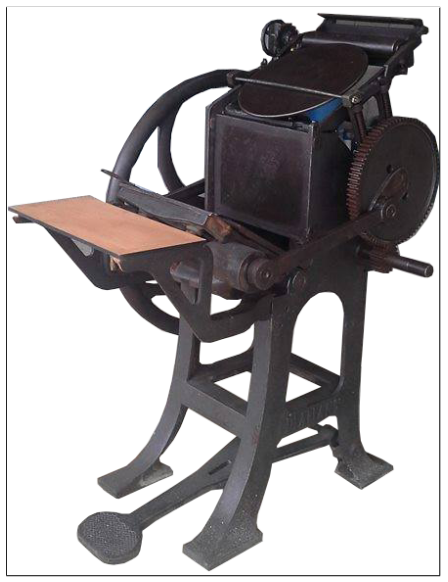This content originally appeared on HackerNoon and was authored by Web Fonts
Table of Links
1.1 Printing Press in Iraq and Iraqi Kurdistan
1.2 Challenges in Historical Documents
Related work and 2.1 Arabic/Persian
Method and 3.1 Data Collection
3.2 Data Preparation and 3.3 Preprocessing
3.4 Environment Setup, 3.5 Dataset Preparation, and 3.6 Evaluation
Experiments, Results, and Discussion and 4.1 Processed Data
1.1 Printing Press in Iraq and Iraqi Kurdistan
According to Hassanpour (1992) printing presses first appeared in the Kurdish towns of the Ottoman Empire in the late 1860s. They were all established, owned, and operated by the government for printing in Turkish. A number of large cities with small Kurdish populations on the outskirts of Kurdistan had an earlier start - Mosul began with a press established by Dominican missionaries in 1856, followed by a government press in 1881, while Erzurum had a government press as early as 1865-66. The age of printing in Kurdish began in a different place than in Kurdistan. All Kurdish books and periodicals published in Kurdish during the Ottoman period were printed outside Kurdistan in Cairo, Istanbul, and Baghdad. This was because (a) except for the Dominican press in Mosul, all other presses were owned by a government not interested in Kurdish publications, (b) publishing was begun by Kurdish nationalists who were mostly in exile in Istanbul and other large cities, and (c) censorship was less effective in Cairo and Istanbul. The earliest record of a printing press owned by Kurds is ”Matba’a Kurdistan ‘Ilmiya” (Scientific Kurdistan Press), established by Faraj-Allah Zaki al-Kurdi in Cairo, Egypt. They printed in Arabic, but there is no evidence of printing in Kurdish with this press.
\ As for Iraq, Giw Mukiryani, the nationalist language former journalist and printer, has claimed in several of his books that the first Kurdish press was founded in 1915 in Aleppo (now Syria) by his brother Husen Huzni Mukriyani, who had printed several books and journals before moving the press to Rawandiz in 1925, Figure 2 shows the printing press by Husen Huzni Mukriyani. Many Kurds have uncritically accepted this claim. There is strong evidence that this press did not exist. According to a notice in Diyari Kurdistan, ”Huzni was in the process of founding” a printing press in Aleppo in 1925 and was asking the Kurds, through this magazine, to pre-purchase a book on Kurdish history and society that he was going to publish.
\ The first press in Iraqi Kurdistan was set up in Sulaymania by the Mandate authorities in 1920. It was an old hand-operated letterpress called Chapkhanay or Matba’a Hukumat (Government Press). It printed six books, 118 issues of the weekly Peskawtin, 14 Issues of Bangi Kurdistan, and 16 issues of Roji Kurdistan between 1920 and 1923. The press and two schools held significant intellectual value for the autonomous government of Shaikh Mahmud, who frequently rebelled against Baghdad and proclaimed himself the King of Kurdistan. Like the newly formed Kurdish state, the press experienced a tumultuous existence. After Baghdad gained control over the region, the press came under the operation of the Municipality. It was subsequently renamed Matba’a Baladiya or Chapkhanay Sharawani (1925) and began printing a government-sponsored weekly publication called Jiyanewe, along with several books.
\ Huzni Mukriyani bought an outdated printing press in Syria and carried it by mule to Rawandiz in 1926, naming his enterprise Matba’a Zari Kirmanji (Kurdish Tongue Press). Huzni and his brother Giw used the ancient instrument to print twenty-three books (i.e., 24.2% of 95 Kurdish books published in Iraq by 1938) and one magazine Zari Kirmanji between 1926 and 1930. The press moved to Arbil, where it began publishing the weekly Runaji in October 1935. It was renamed Chapkhanay Kurdistan (Kurdistan Press) after Huzni passed away in 1947 and began being owned and operated by Giw.
\ Due to the inability to utilize the Municipality Press, Piramerd purchased a larger, albeit used hand-press with worn-out letter types. This press, known as Zhiyan Press, commenced operations in September 1937. It focused on printing the weekly publication ’Jin’. Consequently, by 1937, three Kurdish presses were active: two in Sulaymaniah and one in Arbil. These presses played a role in publishing weekly materials for the Kurdish community.
\

\ Kurdish printing developed in Iraq at a time when the language was undergoing conscious and rapid codification, and it could play, as such, a very significant role in the culturalization process. One aspect of codification that depended on printing was orthographic reform. The successful reform of the alphabet required the casting of new letters and the use of diacritical signs.
\

\

\
:::info Authors:
(1) Blnd Yaseen, University of Kurdistan Howler, Kurdistan Region - Iraq (blnd.yaseen@ukh.edu.krd);
(2) Hossein Hassani University of Kurdistan Howler Kurdistan Region - Iraq (hosseinh@ukh.edu.krd).
:::
:::info This paper is available on arxiv under ATTRIBUTION-NONCOMMERCIAL-NODERIVS 4.0 INTERNATIONAL license.
:::
\
This content originally appeared on HackerNoon and was authored by Web Fonts
Web Fonts | Sciencx (2025-08-18T16:46:01+00:00) Did You Know the First Kurdish Press Was Carried by Mule?. Retrieved from https://www.scien.cx/2025/08/18/did-you-know-the-first-kurdish-press-was-carried-by-mule/
Please log in to upload a file.
There are no updates yet.
Click the Upload button above to add an update.
